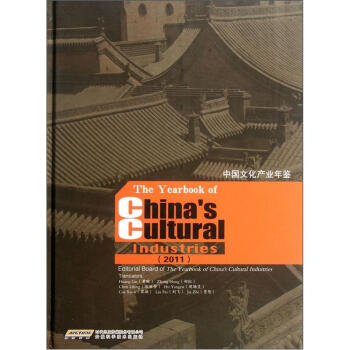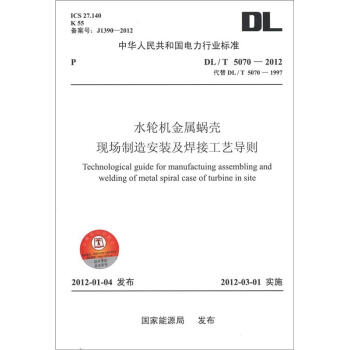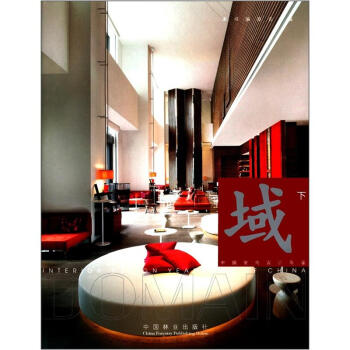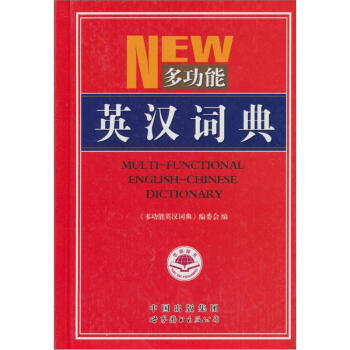

具体描述
内容简介
2010 was the last year of the Eleventh Five-Year Plan period and the crucial year for the formulation of the Twelfth Five-Year Plan. In this year, cultural industries became the new forces driving local economic growth, and gradually turned to be the pillar industries of the national economy of the country. In addition, spurred by the support of state leaders and relevant policies, the development of cultural industries entered into a new era when dramatic breakthroughs would be made, and the cultural industries would have an unprecedentedly far-reaching influence on the future of the country.目录
Chapter 1 National OverviewChapter 2 The Local Survey
Chapter 3 Statistics and Data
Chapter 4 Parks and Bases
Chapter 5 Planning and Items
Chapter 6 Theoretical Studies and Publicatio
精彩书摘
1.Increasing Capital Investment Taking international gallery such as Pace International in Beijing's 798 art zone as anexample,preparation was made to counter international financial crisis.In 2010,capital investmentwas increased,aiming at long term management and fostering new market demand positively.2.Differentiation of Gallery Content Differentiation of content is conducive to reflect the diversity of China's art creation statusquo.Some international galleries insist on promoting first class artists and develop their owncharacteristics in managing artworks of Chinese artists with international fame.For instance,Pace Beijing held an exhibition of "the Great Performance",collecting works of over 30 contemporary Chinese artists,covering video,device,painting,photography,etc.,and from the perspective of"behavior" traced China's artistic creation since 1990s.Domestic galleries represented by galleriessuch as Beijing Commune,PIFO New Art Studio,Star Gallery and Boers-Li focused on thepromotion of new artists groups.3.Positively Selecting Artistic Resources,emphasizing the cooperation between artists and exhibition organizer To select art resources consciously is one of features of China's gallery industry growing mature.In 2010,domestic galleries became more prudent with the cooperation between artists andexhibition organizers.Besides the concern of artwork's value and the market potential,selectingstandards such as cooperation extent,professional extent and personal style have become important.Further more,faced with fierce competition,domestic galleries have realized the necessity of beingthe sole agent for specific artist.Therefore,they have strengthened cooperation with artists,especially those outstanding and young ones.Through regular operation and management,thosegalleries have tried to explore potential or rising artist groups.4.Value-added service capability being boosted Some domestic galleries have been supported by art institutions and co-worked with art critics.They held art seminars and forums during exhibitions,raising the market price of artwork by theacademic value;some galleries have tried to guide art collection and provide professional servicessuch as art market analysis,artwork price analysis and artwork collection training for collectors andart lovers.They also positively interacted with art collectors for the expansion of the art collection group.用户评价
当我看到《中国文化产业年鉴(2011)》这个标题时,我首先想到的是它作为一种“时间胶囊”的意义。2011年,距离互联网全面爆发并重塑内容消费习惯的拐点已经不远,但许多传统文化业态——比如院线票房、实体书销售、传统电视广告投放——依然保持着强劲的惯性。因此,这份年鉴所呈现的,定然是一种充满张力的“前夜”景象:一方面是政策对“文化大发展、大繁荣”的殷切期望与大力扶持;另一方面,新兴的数字文化娱乐(如早期的移动互联网应用)正在悄然积累力量,准备颠覆既有的商业模式。我想象着,翻开这本厚重的书册,映入眼帘的将是大量关于“文化体制改革深化”、“版权保护加强”、“文化产品‘走出去’”等宏大叙事的官方论述,它们为当年的产业发展定下了基调。对于后人研究文化产业发展史的人来说,它就像是一份来自过去时代的详细操作手册,尽管某些数据和论点今天看来可能已显陈旧,但其作为历史基线的定位是无可替代的。
评分这部《中国文化产业年鉴(2011)》的出版,无疑为我们理解彼时中国文化产业的宏大图景提供了一个极具价值的切片。尽管我未能深入研读其具体内容,但仅凭其名字所承载的厚重感和行业指向性,便足以勾勒出一个信息密集、数据驱动的专业工具书的形象。试想,2011年,正值中国社会经济结构转型加速期,文化产业作为新兴支柱产业的地位日益凸显,这份年鉴必然汇集了当年在电影、出版、演艺、动漫、广告乃至文化创意设计等各个细分领域的年度成就、政策动向与市场表现。我能想象其中详尽的统计图表,精确到百分位的增长率分析,以及对重大文化项目和行业领军企业的深度报道。对于研究文化经济学、传媒政策制定者或是希望把握中国市场脉络的投资者而言,这样的年鉴绝非泛泛而谈的行业综述,而是需要耐心啃读的“行业宪法”。它所记录的不仅仅是数字的堆砌,更是特定历史时期内,国家意识形态与市场活力激烈碰撞、融合所产生的复杂图景,是洞察中国软实力战略布局的关键文本。
评分一本专业年鉴的质量,很大程度上取决于其数据的广度和深度。《中国文化产业年鉴(2011)》如果做到位了,它一定是一部庞大而细致的档案库。我期待它不仅有全国层面的宏观数据,更要有对重点省份和直辖市的比较分析,这样才能看出区域差异和政策执行的落地效果。比如,它或许会详细列出当年新成立的文化创意产业园区数量、吸纳的就业人员规模,以及文化产品出口的构成比例。对于那些需要进行长期趋势研究的人士来说,这种跨年度、结构化的信息集合是无可替代的。它不是一本讲故事的书,而是一张标记着过去十年间文化领域关键坐标的航海图。它要求读者具备一定的行业背景知识才能完全消化其信息量,但对于专业人士而言,它就像是那个十年间文化产业的“官方体检报告”,严谨、客观,是进行深度分析的必要前提。
评分坦白说,一本名为“年鉴”的工具书,通常不太会让人联想到阅读的乐趣,它更像是图书馆里需要偶尔查阅、不适合通读的参考资料。然而,正是这种专业性赋予了它独特的价值。我猜想《中国文化产业年鉴(2011)》的编纂团队,必然是一群与政策制定层、行业协会紧密相关的人士。因此,它的权威性毋庸置疑。这本书的价值,或许并不在于它描述了某个精彩的文化事件的细节,而在于它系统地梳理了当年文化产业的“骨架”——从法规变动到产业园区分布,从人才培养机制到投融资情况。阅读它,如同在做一次对过去十多年前的中国文化产业进行一次全面的B超扫描。如果你想知道当时一个省级文化企业的资产负债表大概是什么模样,或者某个特定门类(比如演出市场)的准入门槛设置如何,这本书里大概率会提供最权威的、官方背书的答案,而不是碎片化的网络传闻。
评分这部2011年的年鉴,对我而言,具有一种“考古学”的趣味。我们现在谈论的文化产业,已经完全是移动互联、短视频、直播带货的时代了。回望2011年,当时的“文化产业”概念可能还带有更多的实体经济色彩,比如文化地产、传统出版的数字转型初期尝试,或者大型国有文化集团的改制进程。我好奇的是,当年最被看好的新兴领域,如今发展得如何?哪些预测成了现实,哪些则成了泡沫?这本书必然忠实记录了当年行业精英们的集体判断和主要决策者的战略部署。因此,它提供的不是“结果”,而是“过程”的原始记录。对我这样的普通读者来说,最大的收获可能在于校准我们对历史的记忆——它会强迫我们脱离今天的视角,去理解在那个特定时空背景下,产业发展逻辑是如何一步步建立和演变的,这是一种对历史的敬畏和反思。
相关图书
本站所有内容均为互联网搜索引擎提供的公开搜索信息,本站不存储任何数据与内容,任何内容与数据均与本站无关,如有需要请联系相关搜索引擎包括但不限于百度,google,bing,sogou 等
© 2025 book.coffeedeals.club All Rights Reserved. 静流书站 版权所有

![中华人民共和国水利行业标准(SL 511-2011·替代SDJ 173-85):水利水电工程机电设计技术规范 [Electro-mechanical Design Code for Water Resources and Hydropower Engineering] pdf epub mobi 电子书 下载](https://pic.windowsfront.com/11058826/rBEGD1Ap5fYIAAAAAACeaSNmoSYAABYPQJrXxwAAJ6B128.jpg)

![国家电网公司企业标准(Q/GDW 636—2011):固定式直流融冰装置交接试验及验收规程 [Code for Hand-over Test and Acceptance of Fixed DC De-icer] pdf epub mobi 电子书 下载](https://pic.windowsfront.com/11059421/rBEHZlAt-3IIAAAAAACQYMiY2RkAAACiQEHbKIAAJB4087.jpg)
![国家电网公司企业标准(Q/GDW 6712011):微机型防止电气误操作系统技术规范 [Technical Specification for Preventing Electric Mal-operation System with Computer] pdf epub mobi 电子书 下载](https://pic.windowsfront.com/11059423/rBEHZlAt-3kIAAAAAACKUhs7LJoAAACiQFtkvAAAIpq687.jpg)
![中华人民共和国电力行业标准(DL/T 273-2012):±800kV特高压直流设备预防性试验规程 [Preventive Test Code for ±800kV HVDC Electric Equipments] pdf epub mobi 电子书 下载](https://pic.windowsfront.com/11070277/rBEHZlBPJUkIAAAAAACKD88lMzkAABI2QDNqqoAAIon448.jpg)
![中华人民共和国电力行业标准(DL/T 744-2012·代替 DL/T 744-2001):电动机保护装置通用技术条件 [General Specification for Motor Protection Equipment] pdf epub mobi 电子书 下载](https://pic.windowsfront.com/11070282/rBEHZlBPJUsIAAAAAACDIWzjd8QAABI2QDgKp8AAIM5687.jpg)
![中华人民共和国电力行业标准(DL/T 5271-2012):水电水利工程砂石加工系统施工技术规程 [Code for Construct of Artificial Aggregate Processing Plant for Hydropower & Water Resources] pdf epub mobi 电子书 下载](https://pic.windowsfront.com/11070284/rBEHZlBPJUwIAAAAAACaUl3g19cAABI2QDmCHUAAJpq614.jpg)
![50000词英汉词典(双色版) [An English-Chinese Dictionary of 50000 Words] pdf epub mobi 电子书 下载](https://pic.windowsfront.com/11073414/rBEHaVBEfm8IAAAAAAEqoqHUTnYAAA_8QJ9IVgAASq6579.jpg)


![出入境检验检疫行业标准汇编:危险品包装检验卷危险品检验 [The Standards on Tentry-Exit Inspection and Quarantine] pdf epub mobi 电子书 下载](https://pic.windowsfront.com/11082895/rBEHZlBNqhgIAAAAAABCrZVPwxoAABHeALO1owAAELF552.jpg)
![中华人民共和国国家标准(GB 50750-2012):粘胶纤维设备工程安装与质量验收规范 [Code for Engineering Installment Acceptance of Viscose Fiber Machinery] pdf epub mobi 电子书 下载](https://pic.windowsfront.com/11090677/rBEHaFCI2MAIAAAAAACt-deDK84AACelgPc_2sAAK4R845.jpg)
![中华人民共和国国家标准(GB 50753-2012):有色金属冶炼厂收尘设计规范 [Code for Dust Collection Design of Non-Ferrous Metals Plant] pdf epub mobi 电子书 下载](https://pic.windowsfront.com/11090679/rBEHZ1CI2MQIAAAAAACljpXaVMoAACelgPzjQUAAKWm380.jpg)

![中华人民共和国电力行业标准(DL/T 251-2012):±800kV直流架空输电线路检修规程 [Maintenance code for±800kv DC overhead transmission line] pdf epub mobi 电子书 下载](https://pic.windowsfront.com/11092716/rBEHalBiYM8IAAAAAACOF7zaDawAABhFwO1OdMAAI4v156.jpg)
![中华人民共和国水利行业标准(SL 550-2012):灌溉用施肥装置基本参数及技术条件 [Basic Parameters and Technical Requirements on Chemical Injector Used Fustigation] pdf epub mobi 电子书 下载](https://pic.windowsfront.com/11094569/rBEHZlByZHMIAAAAAACUSm6MUXEAABoIQNaZpcAAJRi035.jpg)
![中华人民共和国水利行业标准化指导性技术文件(SL/Z 549-2012):用水审计技术导则(试行) [Technical Guides for Audit of Water Use] pdf epub mobi 电子书 下载](https://pic.windowsfront.com/11094573/rBEHZlByZHUIAAAAAACPPgkFSrUAABoIQN7Xq4AAI9W221.jpg)
![中华人民共和国水利行业标准(SL 123-2012·替代 SL 123-95):水泥胶砂流动度测定仪校验方法 [Calibration Methods for Fluidity Tester of Cement Mortar] pdf epub mobi 电子书 下载](https://pic.windowsfront.com/11094582/rBEHZlByZHsIAAAAAACMHJx9v5MAABoIQOb8K0AAIw0943.jpg)
![中华人民共和国国家标准(GB 50734-2012):冶金工业建设钻探技术规范 [Technical Code for Drilling of Metallurgical Industry Construction] pdf epub mobi 电子书 下载](https://pic.windowsfront.com/11099040/rBEHalB2eBIIAAAAAACY5fvC5y8AABrlQFEhtkAAJj9906.jpg)
